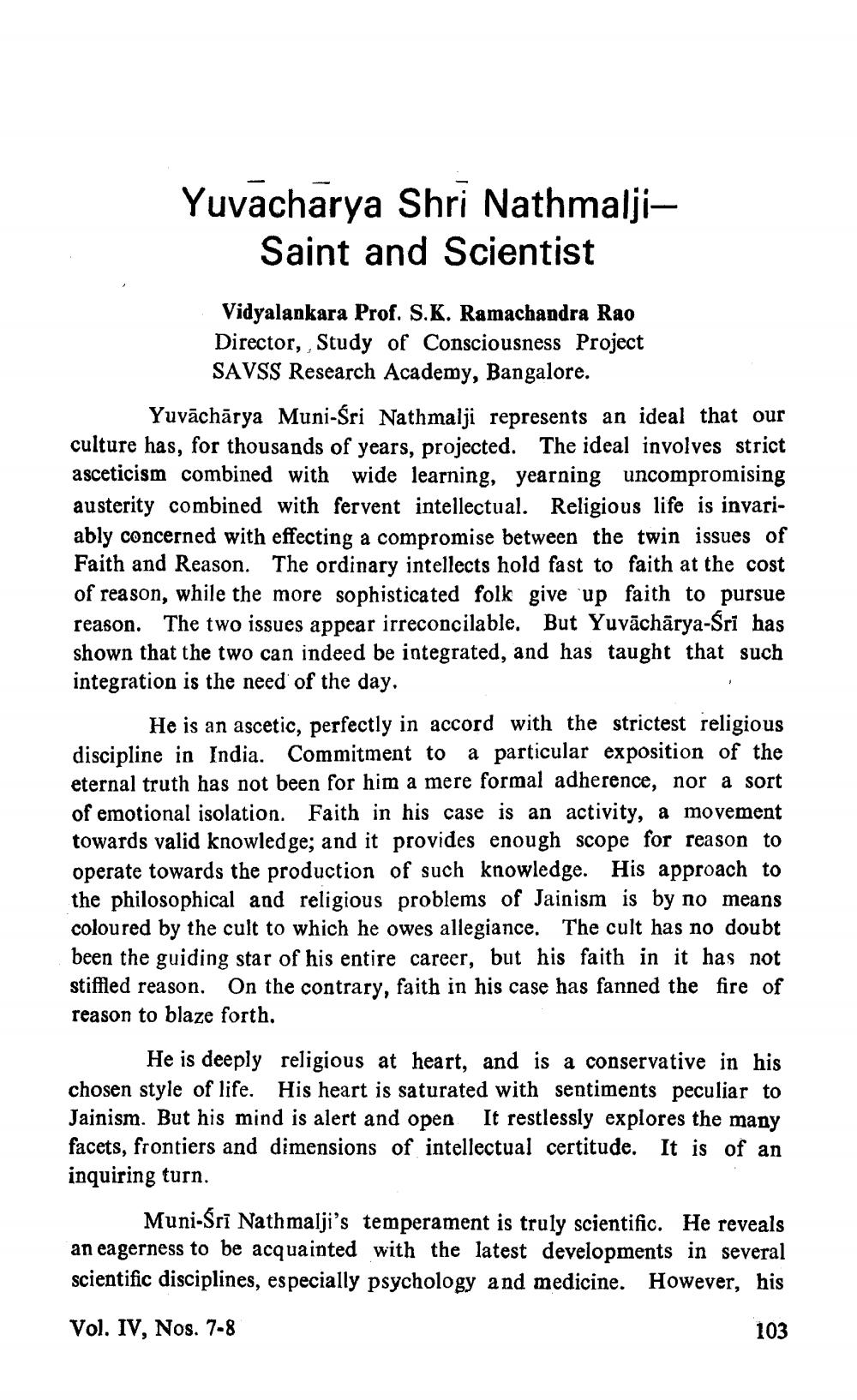________________
Yuvacharya Shri Nathmalji
Saint and Scientist
Vidyalankara Prof. S.K. Ramachandra Rao Director, Study of Consciousness Project
SAVSS Research Academy, Bangalore.
Yuvāchārya Muni-Śri Nathmalji represents an ideal that our culture has, for thousands of years, projected. The ideal involves strict asceticism combined with wide learning, yearning uncompromising austerity combined with fervent intellectual. Religious life is invariably concerned with effecting a compromise between the twin issues of Faith and Reason. The ordinary intellects hold fast to faith at the cost of reason, while the more sophisticated folk give up faith to pursue reason. The two issues appear irreconcilable. But Yuvāchārya-Sri has shown that the two can indeed be integrated, and has taught that such integration is the need of the day,
He is an ascetic, perfectly in accord with the strictest religious discipline in India. Commitment to a particular exposition of the eternal truth has not been for him a mere formal adherence, nor a sort of emotional isolation. Faith in his case is an activity, a movement towards valid knowledge; and it provides enough scope for reason to operate towards the production of such knowledge. His approach to the philosophical and religious problems of Jainism is by no means coloured by the cult to which he owes allegiance. The cult has no doubt been the guiding star of his entire career, but his faith in it has not stiffled reason. On the contrary, faith in his case has fanned the fire of reason to blaze forth.
He is deeply religious at heart, and is a conservative in his chosen style of life. His heart is saturated with sentiments peculiar to Jainism. But his mind is alert and open It restlessly explores the many facets, frontiers and dimensions of intellectual certitude. It is of an inquiring turn.
Muni-Śrī Nath malji's temperament is truly scientific. He reveals an eagerness to be acquainted with the latest developments in several scientific disciplines, especially psychology and medicine. However, his
Vol. IV, Nos. 7-8
103




